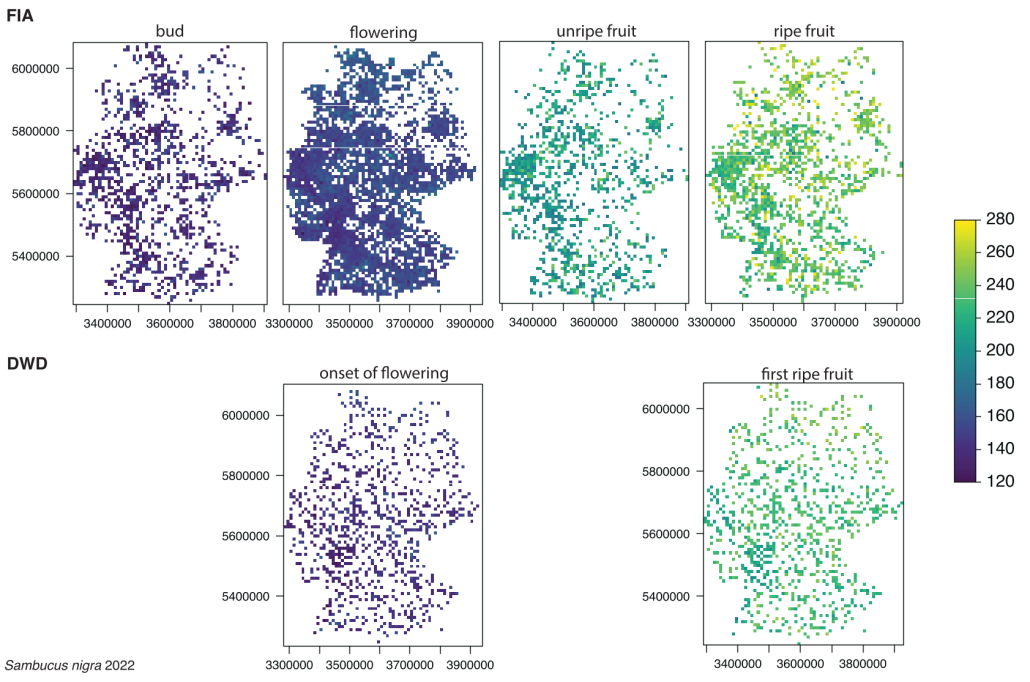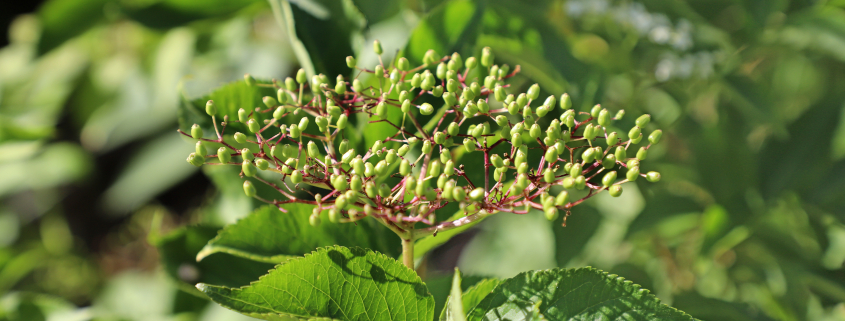New study presents method to extract phenology information from images
Why study phenology?
Plant phenology—the timing of recurring life events such as budburst, flowering, fruiting, and leaf senescence—is central to many ecological processes. It influences plant fitness, plant–animal interactions, and ecosystem processes such as nutrient cycling.

Phenological stages of Sambucus nigra: bud, flower, unripe fruit, ripe fruit (left to right)
The challenge
Our solution
Previous studies have already shown that Flora Incognita observations can reveal strong phenological signals—for example the onset of flowering in species with a short and striking flowering period (see article “Adopting Flora Incognita Plant Observations for Phenology Monitoring” for details).
Our latest work goes one step further: We used AI to train a low-effort, lightweight classifier, which we then used to automatically annotate thousands of images captured by Flora Incognita users. This way, we could identify multiple phenological stages for some species in our data, not just flowering onset. For instance, while the German Weather Service typically provides phenological maps of elderberry for two stages (onset of flowering and first ripe fruit), our method allows for four: budburst, flowering, unripe fruit, and ripe fruit. By this, we can generate far more detailed phenological curves and maps.

Observations of elderberry (Sambucus nigra) in Germany allow fine-grained monitoring of phenological stages. Top: Automatically annotated Flora Incognita plant observations; bottom: systematically captured stages by the German Weather Service (DWD). From: Katal et al.
Take-home message
We show that automatic annotation of phenological stages is not only feasible but also highly reliable, while keeping manual labelling efforts to a minimum. With sufficient image numbers, our AI-based workflow can classify plant photos into distinct phenological stages, and the resulting labelled observations often reveal strong phenological signals (depending on the species).
This approach allows for answering a wide range of ecological questions more easily than ever before.
The study was carried out as part of Negin Katal’s dissertation and is freely available here: [Expanding phenological insights: automated phenostage annotation with community science plant images].
As always, we thank our users for their curiosity and contributions—your observations (those with location data) made this research possible!
Featured Image: Black Elderberry [File:00 3769 Schwarzen Holunder (Sambucus nigra).jpg] by W. Bulach, Germany, CC BY-SA 4.0, via Wikimedia Commons.

